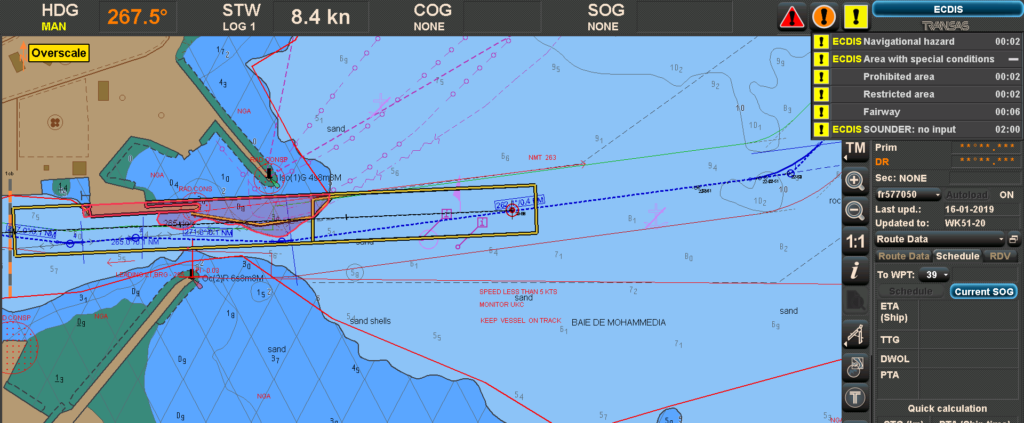
A valuable function of ECDIS is to continuously display position fixes and at the same time, monitor a detection area ahead of the ship for hazards to navigation. This detection area may have a different name depending on the manufacturer, but common terms include
‘safety frame’

‘safety cone’

‘look ahead window’
‘antigrounding cone’ and
‘danger detection’
ECDIS will alert when:
⦁ The detection area initially reaches the safety contour

⦁ The detection area reaches a navigational hazard

⦁ The ship will cross the boundary of prohibited area or an area for which special conditions exist.

The ECDIS operator is able to determine which navigational hazard triggers the alerts and the size of the detection area. The size of the detection area is based either on distance or time.

All detection area are similar in that they feature a shape (or shapes) surrounding own ship, the parameters of which can normally be configured by the ECDIS operator. Note that the detection area may not be visible on the screen, but the detection function will still be working.
The parameters of the detection area must be planned and constantly reviewed to ensure they are appropriate for each leg of the voyage, such as change of parameters when proceeding from ocean to coastal waters.

Some considerations when configuring the detection area include:
⦁ If the area is too small, dangers maybe detected too late
⦁ If the area is too large, an excessive number of alerts may be triggered

⦁ The size of the detection area must be appropriate for the speed and the maneuvering characteristics of the vessel.

⦁ The degree of control the ECDIS operator has over the detection area parameters
⦁ To avoid clutter on the display, danger highlights can be turned off leaving only the detection area visible
⦁ In confined waters/pilotage, the detection area may be adjusted to reduce distraction during critical stages

⦁ As CATZOC quality decreases, the detection area may need to be increased.
